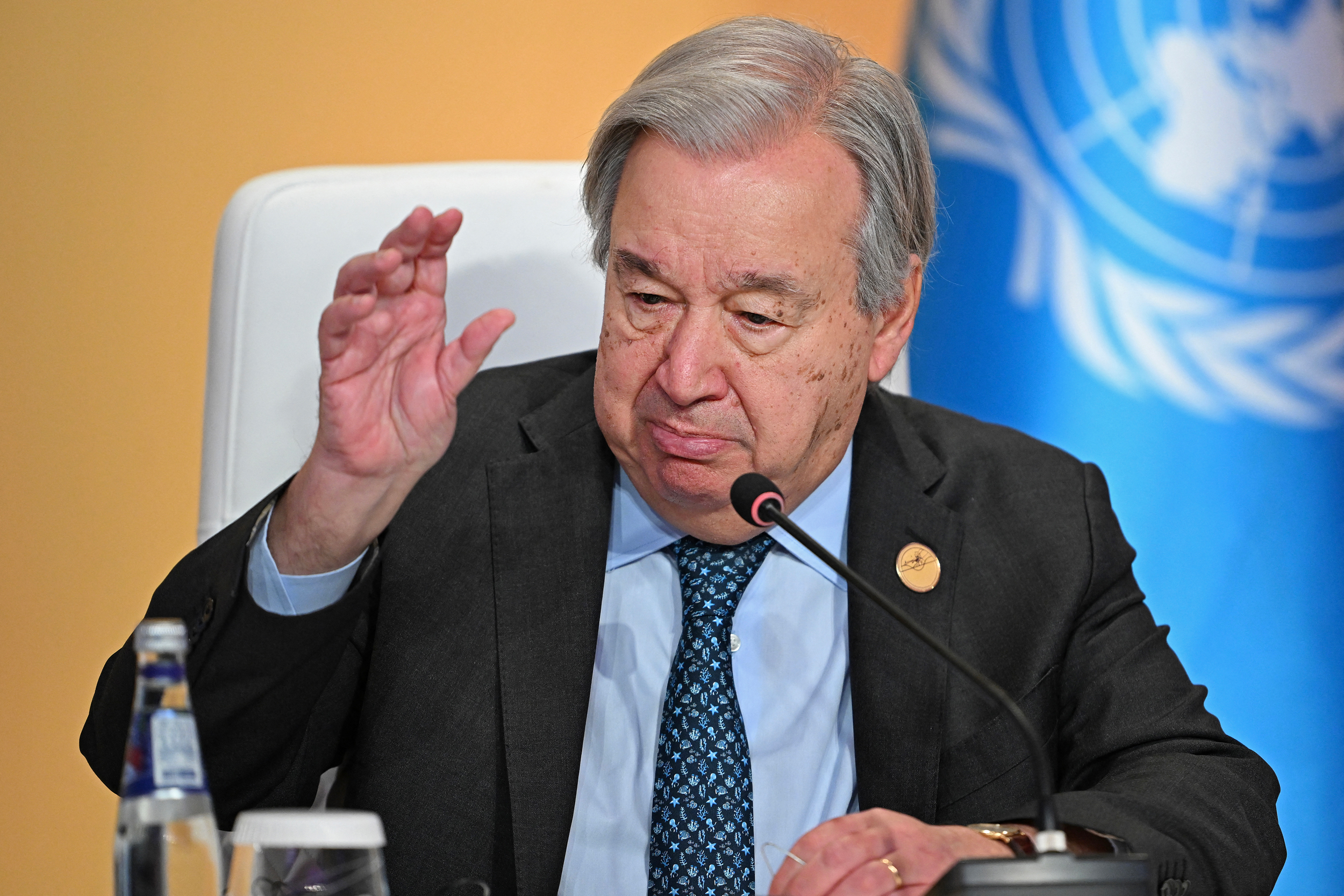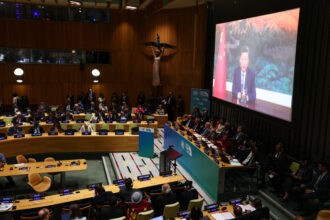A new emissions gap report released by the United Nations Environment Programme suggests that a decade of global climate policy under the Paris Agreement has reduced the projected maximum global warming for this century to less than 3 degrees Celsius for the first time.
The ambitious Paris Agreement “helped steer countries’ policies and public expectations,” said Bill Hare, the CEO of Climate Analytics, an international climate policy think tank. “Ten years on, domestic policies have improved, and the global emissions peak before 2030 is now in sight.”
In 2015, before the global climate pact, scientists said Earth could warm by as much as 5 degrees Celsius above the planet’s average temperature in the late 1800s. That was when oil and gas burning started turning up the global thermostat.
In a televised speech marking the report’s release, United Nations Secretary-General António Guterres said that if existing national climate action plans are fully implemented by 2035, global warming would reach 2.3 to 2.5 degrees Celsius by the end of the century.
“That is progress, but nowhere near enough,” Guterres said. “Current commitments still point to climate breakdown … and the path to a liveable future gets steeper by the day.”
Warming of more than 2 degrees Celsius (3.6 degrees Fahrenheit) would make many low-lying islands uninhabitable and swamp millions of square miles of coastal regions around the world, according to the authoritative climate assessments from the Intergovernmental Panel on Climate Change. Heat waves in equatorial countries would be unsurvivable without shelter; droughts, wildfires and floods would displace millions of people.
“Nations have had three chances to deliver promises made under the Paris Agreement, and each time they have landed off target,” said UNEP executive director Inger Anderson. “Each time they’ve left the world on course for an intensification of the climate crisis. While national climate plans have delivered some progress, it is nowhere near fast enough.”
Overall, the warming projections in this year’s emissions gap report are down by 0.3 degrees Celsius from last year. A change in the way UNEP calculates its projections accounts for a third of the drop, with the rest attributed to updated national climate plans and new implementation measures.
Guterres said the report shows that the global average temperature will pass the most ambitious goal of the Paris Agreement to limit warming to less than 1.5 degrees Celsius sometime in the next 10 years. Warming above that red line, he said, “will inevitably bring dramatic consequences with lives lost, communities uprooted and development gains reversed.”
The new report concludes that the U.S.’s decision to withdraw from the Paris Agreement in January 2026, and its adoption of policies that damage the climate by increasing fossil fuel emissions and eliminating efforts to curb greenhouse gas emissions, will raise global temperatures by about 0.1 degrees Celsius. Every tenth of a degree is like pouring more fuel on the fire, and every additional metric ton of CO2 in the atmosphere melts a car-size chunk of Arctic sea ice.
Andersen said that after the formal comment period ended, the United States government asked UNEP to remove data about the U.S. from the report.
“That’s obviously impossible,” she said, “because it’s one planet, one atmosphere and one impact, and so we will obviously include that data, irrespective of whether they are party or not.” But the report does include a footnote indicating “that the U.S. does not support the emissions gap report,” she said, adding that all UNEP reports are based on science and peer reviewed.
Not acting on climate change has considerable economic costs, said Jennifer Morgan, former German state secretary for climate and special envoy for international climate action.
During the early 2020s, heatwaves, droughts, downpours and other climate extremes caused about €44.5 billion ($51.1 billion) in damage annually to crops, property and infrastructure, up from less than €20 billion ($23 billion) annually in the 2010s, according to the European Environment Agency.
“That’s beginning to resonate with leaders,” she said. “The institutional buy-in of the Paris agreement continues and moves forward despite two pull-outs by the U.S.”
Looking ahead to COP30, the United Nations Framework Convention on Climate Change summit in Belém, Brazil, Morgan lowered expectations for any new game-changing agreements and said the meeting is mostly procedural, with negotiators working to boost implementation of the Paris Agreement.
“This is a COP where there is not a clear-cut outcome,” she said. “Leaders will need to reaffirm Paris and their commitment to closing the gap to 1.5 C.” Steps toward that could include accelerating the existing agreement to triple solar and wind power, and to double energy efficiency, she added.
Christiana Figueres, one of the architects of the Paris Agreement, said she wonders if the fossil fuel industry understands how quickly global energy use is shifting toward renewables.
Fossil fuel industries have seen “unprecedented profits” since Russia invaded Ukraine, but the profits are paid out as shareholder dividends rather than being invested in new exploration, she said, adding that oil and gas field production has been declining by between 5 and 7 percent annually, according to the International Energy Agency.
“Do they actually understand their business continuity is much shorter than they had anticipated?” she asked. “It’s very likely they know a cheaper, better-performing economy, based on clean technology, is rising, and can be built faster.”
Whether the new UNEP report makes a difference in the discussions at COP30 depends on whether national leaders are willing to make science-based decisions in the public interest, Andersen said. She called on governments to enact measures to boost investments in renewables and to provide the technologies needed to all countries that require them.
“Leaders should lead … and leading on climate means understanding the science and understanding that science speaks to policy,” she said. “Being a leader means understanding that it falls upon them to pick up this work and to really explain it to communities.”
About This Story
Perhaps you noticed: This story, like all the news we publish, is free to read. That’s because Inside Climate News is a 501c3 nonprofit organization. We do not charge a subscription fee, lock our news behind a paywall, or clutter our website with ads. We make our news on climate and the environment freely available to you and anyone who wants it.
That’s not all. We also share our news for free with scores of other media organizations around the country. Many of them can’t afford to do environmental journalism of their own. We’ve built bureaus from coast to coast to report local stories, collaborate with local newsrooms and co-publish articles so that this vital work is shared as widely as possible.
Two of us launched ICN in 2007. Six years later we earned a Pulitzer Prize for National Reporting, and now we run the oldest and largest dedicated climate newsroom in the nation. We tell the story in all its complexity. We hold polluters accountable. We expose environmental injustice. We debunk misinformation. We scrutinize solutions and inspire action.
Donations from readers like you fund every aspect of what we do. If you don’t already, will you support our ongoing work, our reporting on the biggest crisis facing our planet, and help us reach even more readers in more places?
Please take a moment to make a tax-deductible donation. Every one of them makes a difference.
Thank you,













